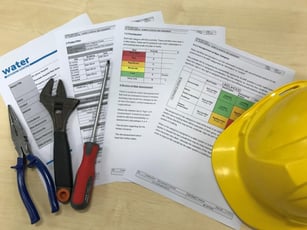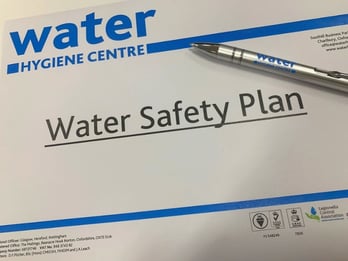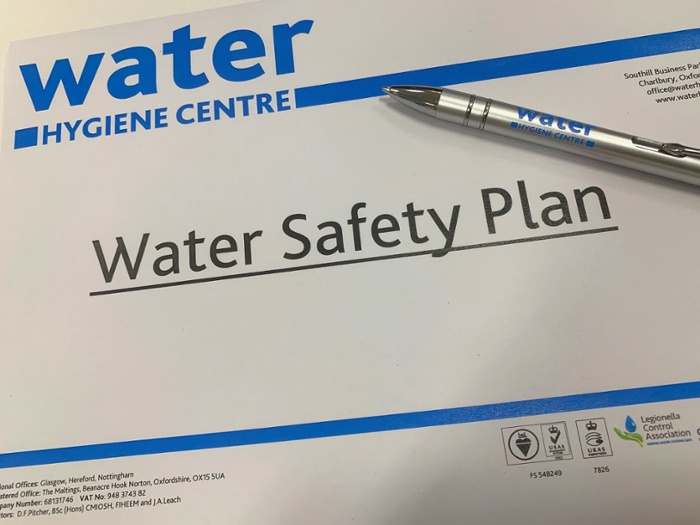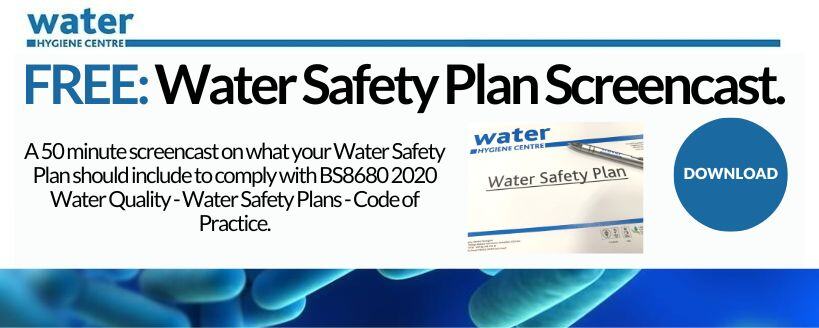Whereas previous Water Hygiene Centre blogs offer details on legionella risk assessment and Water Safety Plans, this blog explores the relationship between the two documents.
As a recap, let us remind ourselves what these documents are;
A legionella risk assessment defined in BS 8580-1:2019 Water quality. Risk assessments for Legionella control. Code of practice is the “process of identifying and assessing the risk of exposure to Legionella bacteria from work activities and water systems and equipment”.
A Water Safety Plan is defined in BS8680 as a “strategic plan which defines and documents the arrangements that are required for the safe use and management of all water systems together with all associated systems and equipment within each building or states to prevent harm arising from all forms of exposure”
To understand the necessity of each is to understand the legal framework for Legionella control and water safety.
Legionella risk assessment - Identifying the risks
 COSHH, regulation 6; Management Regulations, regulation 3 and HSW Act, sections 2, 3, and 4 require employers to make a suitable and sufficient assessment of the risks from any work that could affect an employee's health from exposure to hazardous substances. As Legionella is a waterborne pathogen, it is a biological agent that requires assessment under COSHH.
COSHH, regulation 6; Management Regulations, regulation 3 and HSW Act, sections 2, 3, and 4 require employers to make a suitable and sufficient assessment of the risks from any work that could affect an employee's health from exposure to hazardous substances. As Legionella is a waterborne pathogen, it is a biological agent that requires assessment under COSHH.
Therefore, a suitable and sufficient risk assessment must be carried out to identify and assess the risk of exposure to Legionella bacteria from work activities and water systems.
Water Safety Plan
COSHH, regulations 7 and 9; HSW Act, sections 2, 3, and 4 require employers to maintain, examine, and test control measures and, at suitable intervals review and, if necessary, revise those measures. They must also keep suitable water safety records of examinations, tests, and repairs of control measures.
The HSE’s Approved Code of Practice (ACoP L8), highlights this by suggesting that there “…should be a written scheme for controlling the risk from exposure to Legionella that should be correctly implemented and managed. To ensure it remains effective, the written scheme should specify measures to take.”
The HSE’s HSG 274 Part 2 document, explains this by advising “The scheme should specify the various control measures, how to use and carry out those measures, describe the water treatment regimes along with the correct operation of water systems. The scheme is best tailored and specific to the water system covered by the risk assessment.”
The ACoP L8 continues to detail that “Once the risk has been identified and assessed, a written scheme should be prepared for preventing or controlling it.”
At this stage, a written scheme follows the risk assessment, and its content is dependent on the assessment findings.
But what is a Water Safety Plan? Here’s What You Need to Know!
The concept of the Water Safety Plan was introduced by the World Health Organization in 2004, adopted by The Department of Health in 2013, acknowledged by the HSE in 2014, and standardised by the British Standards Institute in 2020 as BS8680.
 Its intention was for a more holistic approach to water safety, which will include strategies to control a wider breadth of water safety-related risks, not just those posed by Legionella bacteria that we may have been accustomed to.
Its intention was for a more holistic approach to water safety, which will include strategies to control a wider breadth of water safety-related risks, not just those posed by Legionella bacteria that we may have been accustomed to.
It could be argued that a Water Safety Plan is a more extensive document than a written scheme of control, although will include the written scheme of control as part of it.
The scope of a Water Safety Plan should not just be limited to biological hazards such as other waterborne pathogens, water quality, and contamination, but also physical hazards, such as scalding, loss of supply, and drainage. Chemical hazards such as supplementary biocides and radiological hazards such as radon ingress should be included in a Water Safety Plan.
BS8680 gives an example of what a Water Safety Plan could contain, which could also be made up of several separate documents, instead of a single unwieldy version. Whatever form it takes, it should be dependent on the size and complexity of the water system, much like a legionella risk assessment.
Legionella Risk Assessments and My Water Safety Plan
If the two documents were to be placed in a process flow diagram, the legionella risk assessment initially provides the information that forms the written scheme of control, the written scheme of control is a part of the Water Safety Plan.
Where the legionella risk assessment has been updated, this will prompt an update to the written scheme of control part of the Water Safety Plan.
The legionella risk assessment can be seen as the ingredients list that forms the recipe; it includes information critical to the written scheme of control, such information would be;
- The roles and responsibilities of those involved in the management of Legionella;
- Asset lists of all risk systems that need to be managed;
- A review of the current control scheme with any necessary improvements;
- A recommended control scheme if one does not already exist;
- An action plan or risk minimisation scheme containing prioritised recommendations;
Without a legionella risk assessment, it is difficult to determine what water system risks there may be, and which need minimising through control measures. The legionella risk assessment will use regulation and guidance to inform the responsible person of said risks and consequent control measures. It should also be noted that any manufacturer guidance should be included in the control scheme to support any maintenance regimes, as the legionella risk assessment will typically lean on standard guidance to inform of control measures.
Review and Update
As with any document of this kind, its value is dependent on its regular use and accuracy. Therefore, both must remain a living document that is regularly reviewed. Both documents should reflect the type and status of the water systems installed, meaning that whenever there is a significant change to that, an update is required.
The type of changes that would initiate a review of the legionella risk assessment is documented in ACoP L8, but these triggers could also be used in all other water safety-related risk assessments that form the Water Safety Plan. It is then important that any changes identified in a risk assessment are made in the Water Safety Plan.
There are many changes that a legionella risk assessment may identify, which will, in turn, affect the Water Safety Plan, examples of these changes could be;
- The addition, removal, or replacement of assets; such as a hot water generator, which requires a different maintenance regime;
- The alteration to a water system that has now changed the sentinel locations for monthly water temperature checks;
- Information about new risks that require managing, for example, following the WRAS alert for the use of EPDM flexible hoses;
- Changes to guidance documents such as HSG 274 or HTM 04-01 that may advise different frequencies of checks or testing;
- Information regarding new technologies that could help minimise risk and or cost;
- Identification that Legionella training and/or competence of organisation staff is inadequate.
A suitable and sufficient assessment must be carried out to identify and assess the risk of exposure to Legionella bacteria, but also include any precautionary measures. It is critical to allow an organisation to form a plan on how to manage those risks, to both protect users and meet statutory requirements.
The relationship between the two documents is very much “hand in hand”, and should both co-exist, in whatever form suits an organisation.
Feel free to reach out if you have any questions about the issues mentioned above or if you would like to consult with one of our experts on water hygiene.
Editors Note: The information provided in this blog is correct at the date of original publication - August 2017 (Revised February 2024).









